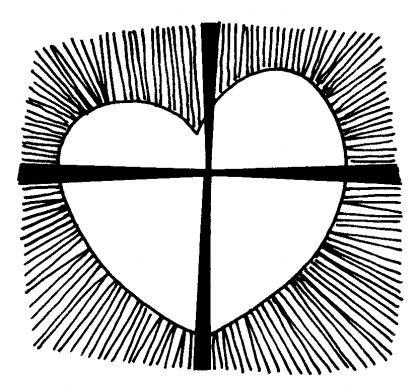May we all make of this Lent a time for a conversion of life to greater love of our self, our neighbor, and God.
-Jim Schroeder, SCJ
“By the sweat of your face
you shall eat bread
until you return to the ground
for out of it you were taken; you are dust,
and to dust you shall return”
(Gen. 3.9). [RSV]
1st POINT: Remembrance of sin and death.–What are dust and ashes? They are a sign of destruction; they are the mark that time, fire and death imprint on things of this earth. What remains of the most famous monuments of antiquity, of the most illustrious capitols, of ancient Rome, Athens, Thebes, or Babylon? Ashes and dust.
Where are the sumptuous edifices, the masterpieces of art that were called the marvels of the world? Ashes and dust. Where are the remains of heroes and sages of bygone ages? Ashes and dust.
After the worldly feasts of the past few days and before the great forty days, the Church wants us to remember the vanity of all things human; but it wants above all that we meditate on our origin, on creation, the sin of first humans and its consequences: “Remember that you came from dust and unto dust you shall return.” It is the divine sentence after the fall. The human was brought forth from clay, but should not return to it. A human should be confirmed in grace and glorified in body as in soul. They had sinned and with sin death entered the world: Per peccatum, mors (Romans 5.12). [Death came through sin]
What havoc! Concupiscence and death are the fruit of sin.
Today the Church proposes to us this fundamental meditation.
I have sinned in Adam [and Eve], I have sinned throughout all my life, I will sin.
O Lord, pardon the sins of all my brothers [and sisters] in Adam, pardon all my own sins. I weep over having offended and insulted you.–I shall die, but before that I want to repair my misdeeds, to wipe them out with penance and to be worthy of resurrection, through the grace of your immolated and merciful Heart.
2nd POINT: Sign of weakness.–What am I? Ashes and dust. Dust is blown away by the wind. So it is with my poor nature. I am vulnerable to every wind of temptation. I am as weak in spirit as I am fragile in body. My will is as movable as dust. What then can I be proud of? What a lesson in humility…
This should be the fruit of this ceremony. I should be mindful, each day, of my nothingness and of my fragility. The material sign marks my forehead, the thought it expresses should be engraved on my memory.
I am nothing, however I will go to God, I will go with humility. I will go deploring my faults, I will go making amends and reparation for my sins and those of my neighbors.
I will go with an awareness of my weakness, but confident at the same time, because God is good, because the Son of God has taken on a heart to love me and He has broken open this Heart to let the sweetness of His mercy flow over me.
3rd POINT: Symbol of penitence.–Ashes have always symbolized penitence. Those who put ashes on their heads and on their clothes want to show that they are sad, to the point of neglecting their self and their grooming…
How shall I do penance during this Lent? First I will fulfill as much as possible the precept of the Church regarding fast and abstinence, then I will die to my bad habits, to my lukewarmness, to my lack of courage, to my sensualism, to my vulgarity.
May the ashes on my head express this death! Through this penance may I die, that through grace I may rise to new life! But may I not forget the kind of penance preferred by the Sacred Heart of Jesus: It is penance through love, it is regret for having offended the best of fathers and of friends, the Savior and Redeemer of my soul.
Resolution. –I am sad and I feel the need to do penance until the paschal resurrection. Each day I will plan my penance in a spirit of love, and I will fulfill it through mortification and a true change of life. I will unite myself with the Heat of Jesus, the victim of reparation and of salvation.
Colloquy [Dialog] with Jesus preaching penance.

